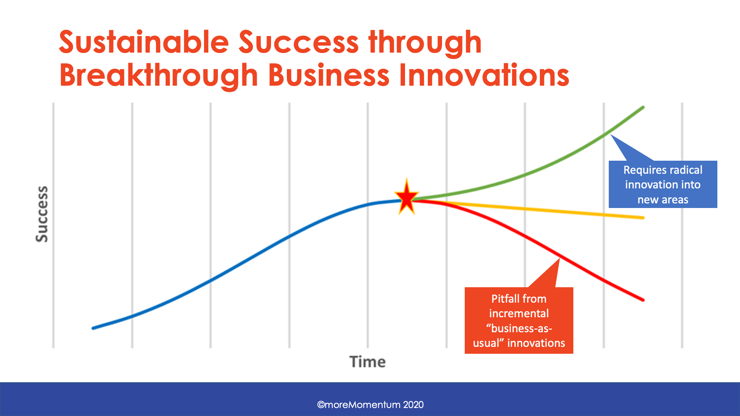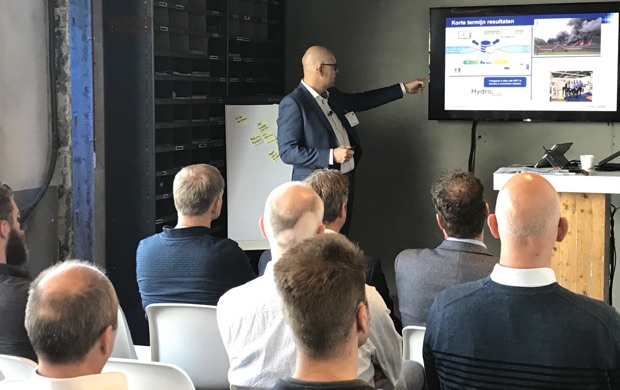3 Steps to Overcome Common Obstacles for Successful Servitization
Servitization, outcome-based services and product-as-a-service are hot topics. However, we see little examples in the industrial sectors. Too often,...
5 min read
Jan van Veen
Jul 15, 2019 1:20:00 PM

Do you miss the necessary strategic support and funding to drive the (digital) service transformation? Do you see a risk of falling behind the competition?
Here are some practical tips to get services on the strategic agenda of your company.
Start selling the "problem" you envision solving with service innovation first, instead of the "solution".
It's all about establishing a shared concern with your stakeholders, after which you can start developing a shared vision and alignment of goals.
Most often, this means:
The biggest mistake I see many service leaders and innovators make is that they try very hard to “sell” services and service innovation with arguments like;
If better services are the solution then what is the problem?
Many service leaders and innovators struggle when they are trying to get active support from stakeholders when it comes to service innovation. They encounter slowdown of these initiatives, often in favour of other initiatives in sales, product development and IT projects when:
For a long time, CEO's and CFO's saw service revenues and margins increasing without really investing in services. The extra contribution margins came in for free. How long can you grow your services by only reaping low hanging fruit?
Anything you recognise? You are not alone!
In this article, I will share practical tips to get services on the strategic agenda of a manufacturing company. These tips are based on how successful service leaders of forward-moving manufacturers achieved this.
In almost every industry we see an accelerating change happening:
Adopting a more data-driven and service-oriented business model is mission-critical for manufacturers to remain successful and get their fair share of the new opportunities of the upcoming years. Manufacturers who do not embrace digital value propositions and services will be left behind and will not see much benefits from the new opportunities of today – if not worse.
In the last years, we see an increasing number of manufacturers making significant progress on developing their service business and continuing their servitization journey. How did they do it?
The best leaders, innovators and influencers never jump to the solution they envision. They always start with the problem, the challenge or the cause they want to solve. As Simon Sinek says with his Golden Circle – Start with the “Why”.
It is critical to selling the problem first, instead of the solution you are trying to push forward. And service innovation is the solution, not the problem.
Step by step and together with leaders from other functions, build a shared concern across the entire organisation around a bigger game – an overarching and critical business challenge for the business as a whole. For most manufacturing companies, important elements of this shared concern will be the following 3 elements:
To fight the ongoing pressure on performance, increasing competition and commoditisation of today’s products and services, your company needs to find new growth curves to secure success for the (near) future and to secure a competitive position in your industry.

The main topics to discuss with your stakeholders are signs of this pressure on performance and the increasing pressure from the outside. Examples are:
Service leaders need to capture unbiased and actionable data and insights into how the service industry is developing and what other manufacturers do to advance their services.
A solid and well-grounded service strategy needs a strategic assessment on:
Service Benchmarking is invaluable for this.
Your competitors, partners and clients are having many new opportunities by applying new technologies. These new technologies also attract new (digital savvy) entrants to your industry and therefore change the competitive landscape. Your company does not want to be left behind. You want to make sure your company gets a fair share of the potential benefits of these upcoming opportunities.
This means that a higher pace of business innovation beyond business-as-usual is critical to stay relevant and successful.
In today’s rapidly changing world, your clients are facing new challenges, and therefore their needs are changing. For sure, there will be (new) companies that will offer your clients great new solutions for these new, unmet needs.
And so should your company.
You can build a shared concern with a compelling story about changing customer needs and how these needs are not met yet.
This requires deep customer insights which go beyond the existing customer insights and beyond evolving requirements for your current products.
So, what are the critical business challenges of your clients? What are their visions for the future? What are their strategies? And which new pain points can your company help solving today or in the near future?
Once you have established a sufficient shared concern, you and your stakeholders will have a constructive dialogue to find and pursue new solutions for the shared concern. This will be the fundament for strategic commitment and alignment of the strategic initiatives. One of these strategic initiatives most definitely will be to develop a more service-oriented business model.
Building this shared concern is not a one-time action. It is an ongoing effort to step by step build a stronger and broader vision, to maintain this vision and keep it alive throughout the entire organisation. This will help to build and maintain momentum in your company and get you ahead of the pack.
It is not about driving and pushing for more support for service innovation initiatives.
It is about driving alignment and momentum throughout the entire organisation around a shared vision, a shared goal and a shared overall strategy.
If better services are the solution, what is the problem you are trying to solve?
Getting services on the strategic agenda starts with selling and promoting the bigger concern, not selling and pushing service innovation. To sell and promote this problem:
Bottom line: Sell the problem first, not the solution!
I have some questions for you:
Are you looking for a service benchmark? Check out our recorded webinar about moreMomentum's Service Transformation Benchmark

Servitization, outcome-based services and product-as-a-service are hot topics. However, we see little examples in the industrial sectors. Too often,...

A Masterclass "How to Develop new Service Business Models", by Jan van Veen (moreMomentum), Joris van den Burg (Yokogawa) and Marco Vos (Marel)...

One of the key challenges confronting manufacturers today, as they embark on their service transformation journey, is building strong service...